2024 June 19 morning
2024 June 19 morning
Jeremy Tatum writes: No Invertebrate Alerts for June 17 and 18! Sorry ‘bout that! In case you are wondering, there were actually no submissions on June 17. On June 18, unfortunately, I had so many appointments of one sort or another that day that I just couldn’t quite find the time or energy. Back to normal today, I think.
I didn’t see any butterflies yesterday (June 18), but I had ample compensation in seeing a sesiiid (clearwing) moth in Swan Creek Park – almost certainly Synanthedon bibionipennis. Sesiids are always excitng to see.
Marie O’Shaughnessy photographed this beetle along Richmond Road on June 17. Although it doesn’t seem to have particularly long “horns”, it is nevertheless in the Family of Long-horned Beetles, Cerambycidae. We don’t know the exact species.
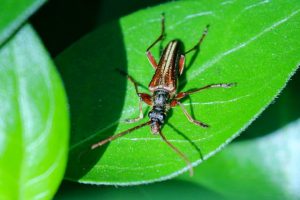 Long-horned beetle (Col.: Cerambycidae) Marie O’Shaughnessy
Long-horned beetle (Col.: Cerambycidae) Marie O’Shaughnessy
Marie photographed this menacing-looking robber fly at Island View Beach on June 18. Don’t sit too close to your computer screen in case it flies out and jumps on you. Dr Rob Cannings identifies it as Laphria sp.
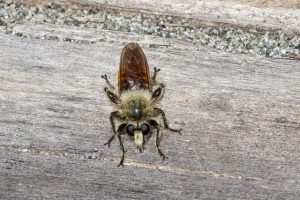 Robber Fly Laphria sp. (Dip.: Asilidae) Marie O’Shaughnessy
Robber Fly Laphria sp. (Dip.: Asilidae) Marie O’Shaughnessy
In answer to Marie’s question: Is that fly rather nasty/dangerous?, Dr Cannings writes:
Robber flies are harmless to humans. They sometimes land on an arm or a leg or a back, but that’s only a perch for them. However, if you grab one in your hand, say, when removing one from a net, the larger ones can bite in self defence. I have had Efferia individuals bite me – it hurts, like the bite of a notonectid backswimmer (if you’ve ever had that happen to you – again, a self-defence bite).
As you know, the bite is actually an injection (through the proboscis) of proteolytic enzymes that kill insect prey. This saliva dissolves muscles and organs and the soup is sucked up through the proboscis. Thus, a small amount under your skin will sting a bit as the nerves are affected.
Also at Island View Beach, Marie photographed this Lorquin’s Admiral:
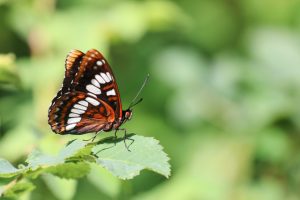 Lorquin’s Admiral Limenitis lorquini (Lep.: Nymphalidae) Marie O’Shaughnessy
Lorquin’s Admiral Limenitis lorquini (Lep.: Nymphalidae) Marie O’Shaughnessy
Val George writes: This moth, Spargania magniolata, was on the wall of the Nature House at Goldstream Park today, June 18.
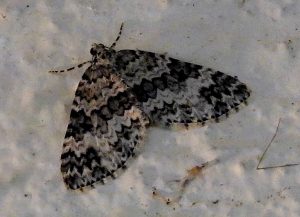 Spargania magniolata (Lep.: Geometridae) Val George
Spargania magniolata (Lep.: Geometridae) Val George
And this moth, which ecloded (emerged) from its pupa yesterday, was reared from a caterpillar that fed on the leaves of the Armenian Blackberry. It was released near Blenkinsop Lake.
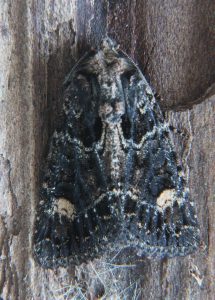 Aseptis binotata (Lep.: Noctuidae) Jeremy Tatum
Aseptis binotata (Lep.: Noctuidae) Jeremy Tatum
